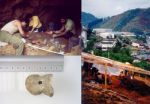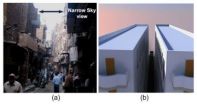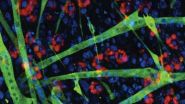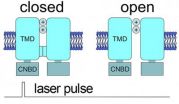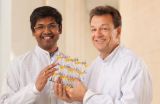(Press-News.org) This news release is available in Spanish.
Until now, the carbon 14 technique, a radioactive isotope which gradually disappears with the passing of time, has been used to date prehistoric remains. When about 40,000 years, in other words approximately the period corresponding to the arrival of the first humans in Europe, have elapsed, the portion that remains is so small that it can become easily contaminated and cause the dates to appear more recent. It was from 2005 onwards that a new technique began to be used; it is the one used to purify the collagen in DNA tests. Using this method, the portion of the original organic material is obtained and all the subsequent contamination is removed.
And by using this technique, scientists have been arriving at the same conclusions at key sites across Europe: "We can see that the arrival of our species in Europe took place 8,000 years earlier than what had been thought and we can see the earliest datings of our species and the most recent Neanderthal ones, in which, in a specific regional framework, there is no overlapping," explained Alvaro Arrizabalaga, professor of the department of Geography, Prehistory and Archaeology, and one of the UPV/EHU researchers alongside María-José Iriarte and Aritza Villaluenga.
The three caves chosen for the recently published research are located in Girona (L'Arbreda), Gipuzkoa (Labeko Koba) and Asturias (La Viña); in other words, at the westernmost and easternmost tips of the Pyrenees and it was where the flow of populations and animals between the peninsula and continent took place. "L'Arbreda is on the eastern pass; Labeko Koba, in the Deba valley, is located on the entry corridor through the Western Pyrenees (Arrizabalaga and Iriarte excavated it in a hurry in 1988 before it was destroyed by the building of the Arrasate-Mondragon bypass) and La Viña is of value as a paradigm, since it provides a magnificent sequence of the Upper Palaeolithic, in other words, of the technical and cultural behaviour of the Cro-magnons during the last glaciation", pointed out Arrizabalaga.
The selecting of the remains was very strict allowing only tools made of bones or, in the absence of them, bones bearing clear traces of human activity, as a general rule with butchery marks, in other words, cuts in the areas of the tendons so that the muscle could be removed. "The Labeko Koba curve is the most consistent of the three, which in turn are the most consistent on the Iberian Peninsula," explained Arrizabalaga. 18 remains were dated at Labeko Koba and the results are totally convergent with respect to their stratigraphic position, in other words, those that appeared at the lowest depths are the oldest ones.
The main conclusion –"the scene of the meeting between a Neanderthal and a Cro-magnon does not seem to have taken place on the Iberian Peninsula"– is the same as the one that has been gradually reached over the last three years by different research groups when studying key settlements in Great Britain, Italy, Germany and France. "For 25 years we had been saying that Neanderthals and early humans lived together for 8,000-10,000 years. Today, we think that in Europe there was a gap between one species and the other and, therefore, there was no hybridation, which did in fact take place in areas of the Middle East," explained Arrizabalaga. The UPV/EHU professor is also the co-author of a piece of research published in 2012 that puts back the datings of the Neanderthals. "We did the dating again in accordance with the ultrafiltration treatment that eliminates rejuvenating contamination, remains of the Mousterian, the material culture belonging to the Neanderthals from sites in the south of the Peninsula. Very recent dates had been obtained in them –up to 29,000 years– but the new datings go back to 44,000 years older than the first dates that can be attributed to the Cro-Magnons," explained the UPV/EHU professor.
INFORMATION: END
Neanderthals and Cro-magnons did not coincide on the Iberian Peninsula
Neanderthals and Cro-magnons did not coincide on the Iberian Peninsula
2014-04-14
ELSE PRESS RELEASES FROM THIS DATE:
Let the sun shine in: Redirecting sunlight to urban alleyways
2014-04-14
WASHINGTON, April 14—In dense, urban centers around the world, many people live and work in dim and narrow streets surrounded by tall buildings that block sunlight. And as the global population continues to rise and buildings are jammed closer together, the darkness will only spread.
To alleviate the problem, Egyptian researchers have developed a corrugated, translucent panel that redirects sunlight onto narrow streets and alleyways. The panel is mounted on rooftops and hung over the edge at an angle, where it spreads sunlight onto the street below. The researchers describe ...
Wolves at the door: Study finds recent wolf-dog hybridization in Caucasus region
2014-04-14
Dog owners in the Caucasus Mountains of Georgia might want to consider penning up their dogs more often: hybridization of wolves with shepherd dogs might be more common, and more recent, than previously thought, according to a recently published study in the Journal of Heredity (DOI: 10.1093/jhered/esu014).
Dr. Natia Kopaliani, Dr. David Tarkhnishvili, and colleagues from the Institute of Ecology at Ilia State University in Georgia and from the Tbilisi Zoo in Georgia used a range of genetic techniques to extract and examine DNA taken from wolf and dog fur samples as well ...
Regenerating muscle in Duchenne muscular dystrophy: Age matters
2014-04-14
LA JOLLA, Calif., April 11, 2014 — A team of scientists led by Pier Lorenzo Puri, M.D., associate professor at Sanford-Burnham Medical Research Institute (Sanford-Burnham), in collaboration with Fondazione Santa Lucia in Rome, Italy, have published details of how a class of drugs called "HDACis" drive muscle-cell regeneration in the early stages of dystrophic muscles, but fail to work in late stages. The findings are key to furthering clinical development of HDACis for Duchenne muscular dystrophy (DMD), an incurable muscle-wasting disease.
A symphony to rebuild muscle
The ...
New 'tunable' semiconductors will allow better detectors, solar cells
2014-04-14
One of the great problems in physics is the detection of electromagnetic radiation – that is, light – which lies outside the small range of wavelengths that the human eye can see. Think X-rays, for example, or radio waves.
Now, researchers have discovered a way to use existing semiconductors to detect a far wider range of light than is now possible, well into the infrared range. The team hopes to use the technology in detectors, obviously, but also in improved solar cells that could absorb infrared light as well as the sun's visible rays.
"This technology will also ...
A stable model for an unstable target
2014-04-14
A study in The Journal of General Physiology provides new insights about singlet oxygen and sets the stage for better understanding of this highly reactive and challenging substance.
Singlet oxygen is an electronically excited state of oxygen that is less stable than normal oxygen. Its high reactivity has enabled its use in photodynamic therapy, in which light is used in combination with a photosensitizing drug to generate large amounts of singlet oxygen to kill cancer cells or various pathogens.
Light-generated singlet oxygen also plays a role in a range of biological ...
Better solar cells, better LED light and vast optical possibilities
2014-04-14
Changes at the atom level in nanowires offer vast possibilities for improvement of solar cells and LED light. NTNU-researchers have discovered that by tuning a small strain on single nanowires they can become more effective in LEDs and solar cells.
NTNU researchers Dheeraj Dasa and Helge Weman have, in cooperation with IBM, discovered that gallium arsenide can be tuned with a small strain to function efficiently as a single light-emitting diode or a photodetector. This is facilitated by the special hexagonal crystal structure, referred to as wurtzite, which the NTNU ...
Pioneering findings on the dual role of carbon dioxide in photosynthesis
2014-04-14
Scientists at Umeå University in Sweden have found that carbon dioxide, in its ionic form bicarbonate, has a regulating function in the splitting of water in photosynthesis. This means that carbon dioxide has an additional role to being reduced to sugar. The pioneering work is published in the latest issue of the scientific journal PNAS.
It is well known that inorganic carbon in the form of carbon dioxide, CO2, is reduced in a light driven process known as photosynthesis to organic compounds in the chloroplasts. Less well known is that inorganic carbon also affects the ...
The result of slow degradation
2014-04-14
This news release is available in German. Although persistent environmental pollutants have been and continue to be released worldwide, the Arctic and Antarctic regions are significantly more contaminated than elsewhere. The marine animals living there have some of the highest levels of persistent organic pollutant (POP) contamination of any creatures. The Inuit people of the Arctic, who rely on a diet of fish, seals and whales, have also been shown to have higher POP concentrations than people living in our latitudes.
Today, the production and use of nearly two dozen ...
Nutrient-rich forests absorb more carbon
2014-04-14
The ability of forests to sequester carbon from the atmosphere depends on nutrients available in the forest soils, shows new research from an international team of researchers including the International Institute for Applied Systems Analysis (IIASA).
The study showed that forests growing in fertile soils with ample nutrients are able to sequester about 30% of the carbon that they take up during photosynthesis. In contrast, forests growing in nutrient-poor soils may retain only 6% of that carbon. The rest is returned to the atmosphere as respiration.
"This paper produces ...
Scientists open door to better solar cells, superconductors and hard-drives
2014-04-14
Using DESY's bright research light sources, scientists have opened a new door to better solar cells, novel superconductors and smaller hard-drives. The research reported in the scientific journal Nature Communications this week enhances the understanding of the interface of two materials, where completely new properties can arise. With their work, the team of Prof. Andrivo Rusydi from the National University of Singapore and Prof. Michael Rübhausen from the Hamburg Center for Free-Electron Laser Science (CFEL) have solved a long standing mystery in the physics of condensed ...
LAST 30 PRESS RELEASES:
Three UH Rainbow Babies & Children’s faculty elected to prestigious American Pediatric Society
Tunnel resilience models unveiled to aid post-earthquake recovery
Satellite communication systems: the future of 5G/6G connectivity
Space computing power networks: a new frontier for satellite technologies
Experiments advance potential of protein that makes hydrogen sulfide as a therapeutic target for Alzheimer’s disease
Examining private equity’s role in fertility care
Current Molecular Pharmacology achieves a landmark: real-time CiteScore advances to 7.2
Skeletal muscle epigenetic clocks developed using postmortem tissue from an Asian population
Estimating unemployment rates with social media data
Climate policies can backfire by eroding “green” values, study finds
Too much screen time too soon? A*STAR study links infant screen exposure to brain changes and teen anxiety
Global psychiatry mourns Professor Dan Stein, visionary who transformed mental health science across Africa and beyond
KIST develops eco-friendly palladium recovery technology to safeguard resource security
Statins significantly reduce mortality risk for adults with diabetes, regardless of cardiovascular risk
Brain immune cells may drive more damage in females than males with Alzheimer’s
Evidence-based recommendations empower clinicians to manage epilepsy in pregnancy
Fungus turns bark beetles’ defenses against them
There are new antivirals being tested for herpesviruses. Scientists now know how they work
CDI scientist, colleagues author review of global burden of fungus Candida auris
How does stroke influence speech comprehension?
B cells transiently unlock their plasticity, risking lymphoma development
Advanced AI dodel predicts spoken language outcomes in deaf children after cochlear implants
Multimodal imaging-based cerebral blood flow prediction model development in simulated microgravity
Accelerated streaming subgraph matching framework is faster, more robust, and scalable
Gestational diabetes rose every year in the US since 2016
OHSU researchers find breast cancer drug boosts leukemia treatment
Fear and medical misinformation regarding risk of progression or recurrence among patients with breast cancer
Glucagonlike peptide-1 receptor agonists and asthma risk in adolescents with obesity
Reviving dormant immunity: Millimeter waves reprogram the immunosuppressive microenvironment to potentiate immunotherapy without obvious side effects
Safety decision-making for autonomous vehicles integrating passenger physiological states by fNIRS
[Press-News.org] Neanderthals and Cro-magnons did not coincide on the Iberian PeninsulaNeanderthals and Cro-magnons did not coincide on the Iberian Peninsula
